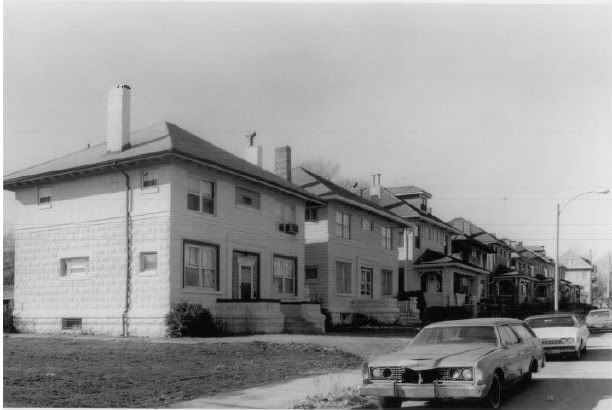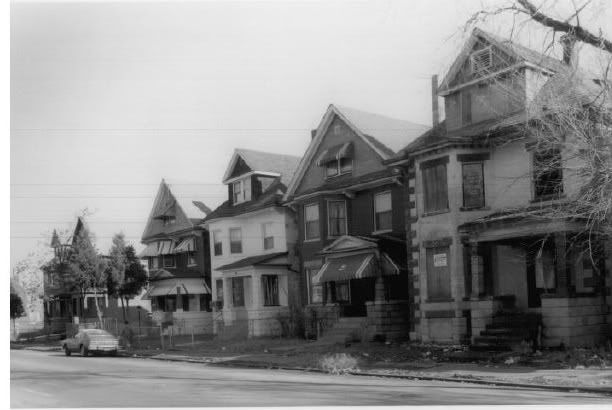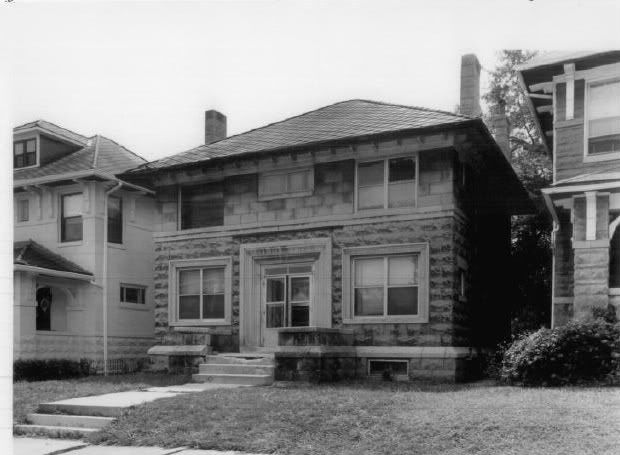In New Orleans, the crescendo of that city's remarkable drive to preserve their historic and incomparable built environment played out when city planners, including famous New York transportation guru Robert Moses, planned to route an expressway through the beloved French Quarter. In a city that was forever changed by the U.S. Civil War, yet another battle of citizen against citizen ensued. Ultimately, and unbelievably, opponents of the highway won out in what was one of the nation's few successful "freeway revolts."
While St. Louis has had some high profile preservation victories (for example, the Wainright Building, a structure of unbelievable architectural importance that was, of course, once slated for demolition; the Cupples complex in downtown, still mostly intact; the ongoing fight to save the Mullanphy Building, etc.), even more prominent scars to the built environment mar the efficacy of preservation in St. Louis. The loss of the Century Building is perhaps the most bitter and senseless loss of them all, and that dust from that battle has hardly settled yet.
That is why, ironically, the battle for the San Luis is so important. The modernist Hotel DeVille, later San Luis Apartments, has stood in the Central West End since the early 1960s. Many cities across the country are discarding their modernist structures. Some are lost for what is considered better and more contemporary design. Others are lost for lesser uses--such as in the case of the San Luis--for parking lots and garages.
Yet the battle for preservation of the built environment is now embracing modernist structures. In St. Louis, alone, several important modern buildings have been labeled historic and placed on the National Register of Historic Places:
The Plaza Square Apartments in downtown St. Louis; the Nooter Corp. Building in Kosciusko, and, closer to the San Luis, the Bel-Air Motel on Lindell.
Here is an
interesting case out of our nation's capital.

The Third Church of Christ, Scientist wants to tear down this building for something they say is a better fit for the neighborhood.
Yet the Church is a rare example of Brutalism--an architectural movement that began in the 1950s and reached its peak sometime in the late 1960s and early 1970s. Preservationists say its uniqueness is an asset. The now oft-maligned Brutalist movement used concrete as a means to represent starkly repetitive geometries. Many decry the style's bulky, concrete facades as cumbersome and ugly. Others say they're a window into their time--and, if nothing else, they make a visual statement!
St. Louis's own Brutalist "Pet Building", now Pointe 400, is an example of the style working within an urban context (in my opinion, anyway).

Pointe 400, taken from the Arch Grounds (thus, all the greenery). Source.
My point in all of this? Modernism is the new stage upon which preservation battles will play out. The impending fight over the San Luis is a very welcome development within the growing St. Louis Urbanist community. It is perhaps the St. Louis "Riverfront Expressway" controversy that was seen in New Orleans: a seminal resistance to the careless destruction of the built environment by the powers-that-be.
Vanishing STL has reported that the San Luis is once again imminently threatened. Luckily, St. Louis Urbanists and allies of "No Parking Lot on Lindell" are meeting to organize an effort to block demolition by the Archdiocese of St. Louis. This meeting will be held on Thursday, January 22nd, at 7pm. The location is Coffee Cartel--mere blocks from the presently ill-fated modernist structure.
I cannot stress enough how momentous and important it is for St. Louis citizens to express to their leadership that they, too, should have a voice and a part in the way their city looks and functions. The Central West End, St. Louis's premiere urban neighborhood, should not be host to a parking lot on its most prominent urban boulevard--no matter how "green" the proposed lot is. Parking is available at the garage at Euclid/Lindell, and I concur with Paul at Vanishing STL that shuttles are a good option for those unwilling or unable to make the one block trek to the Cathedral.
Perhaps more importantly, I believe the San Luis is a structure of merit. Though it will be difficult convincing a wider public of this, that is all part of the fun of reshaping the way urban redevelopment politics work in St. Louis. I regret, more than you know, my inability to directly participate in this movement. But I urge organizers and participants to fight fiercely, brutally, to ensure that this building remains.
Don't take "we need the parking" for an answer. Don't take "it's an ugly building, anyway" as a response. Don't accept "well, it is a green lot" as an excuse. Don't allow closed door decisions to go unnoticed and unpublicized. Attend all public meetings and make your voice and disapproval heard. Write your alderman, as well as 28th Ward Alderperson Lyda Krewson, to express your disappointment in the Archdiocese's short-sighted and anti-urban intentions.
This could well be the turning point in preservation that St. Louis had needed for so long. Too often developers and institutions whose decisions have longlasting effects on the built environment assume they can act because they hear only the scattered voices of pesky "activists" and gadflys. It's high time the "average citizen" stands against ludicrous waste of an important building on one of St. Louis's most important boulevards.
Be a stakeholder. St. Louis needs them. Join this brutal battle and redefine the way the powers that shape this city act toward its citizenry.












